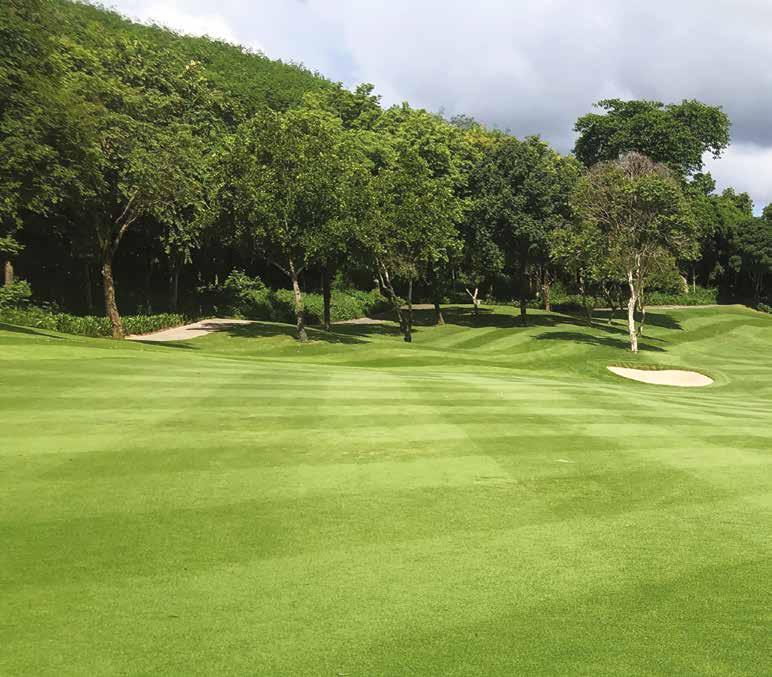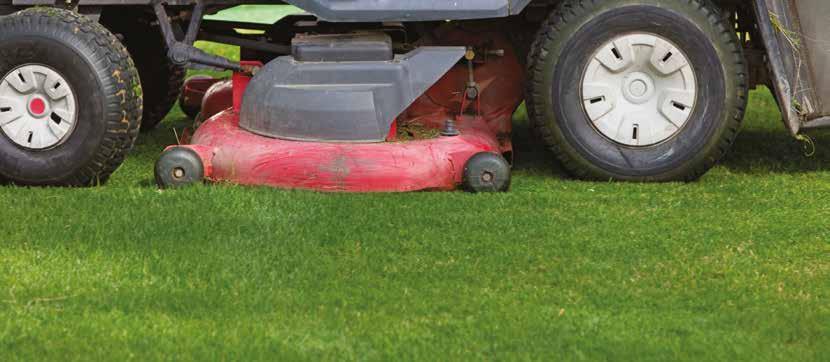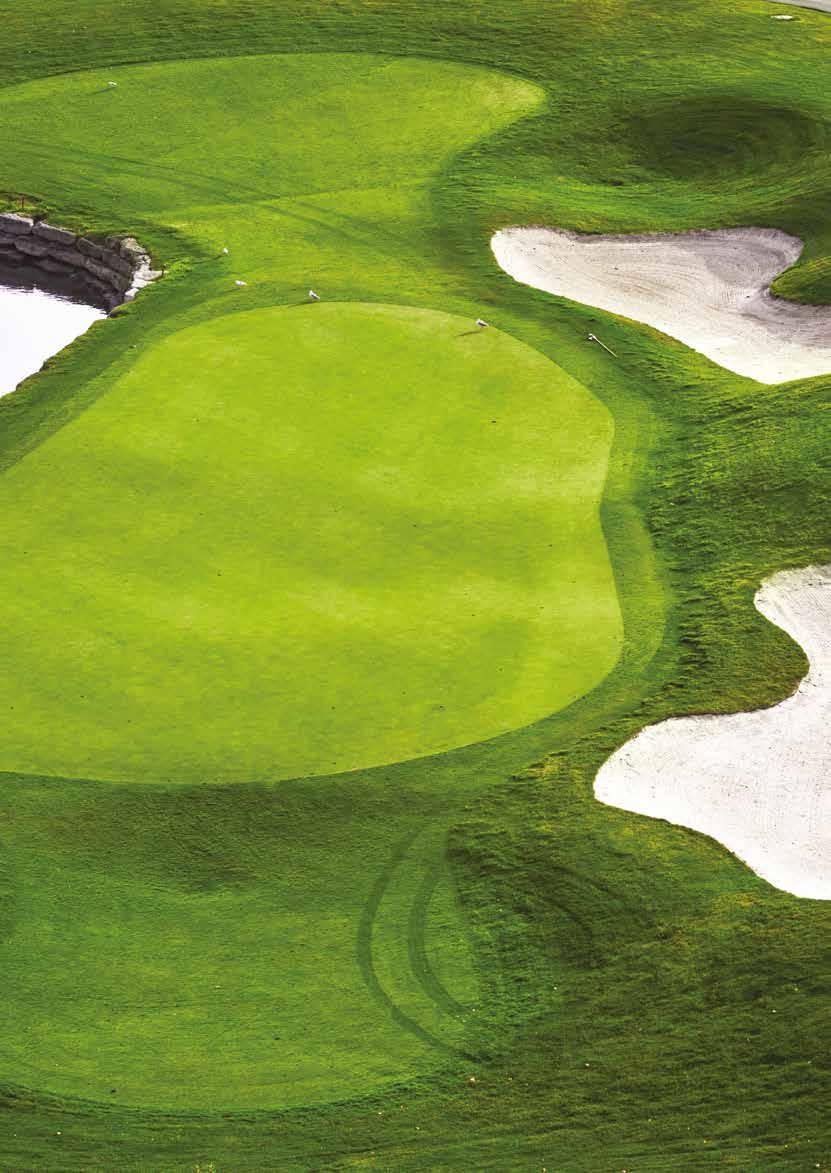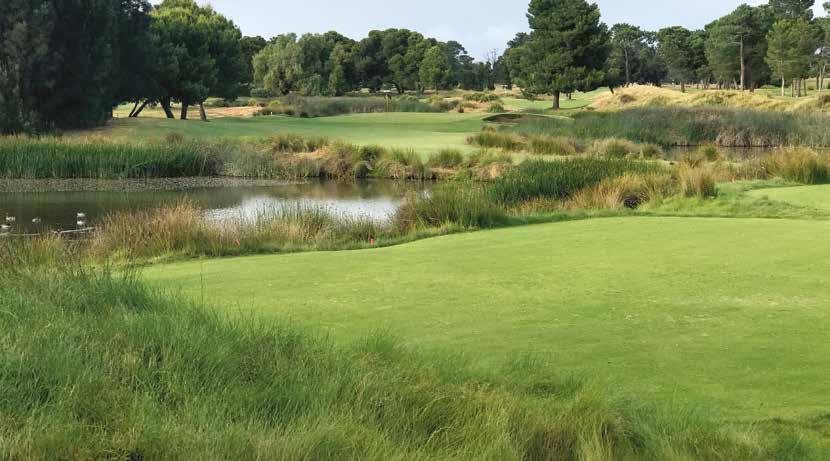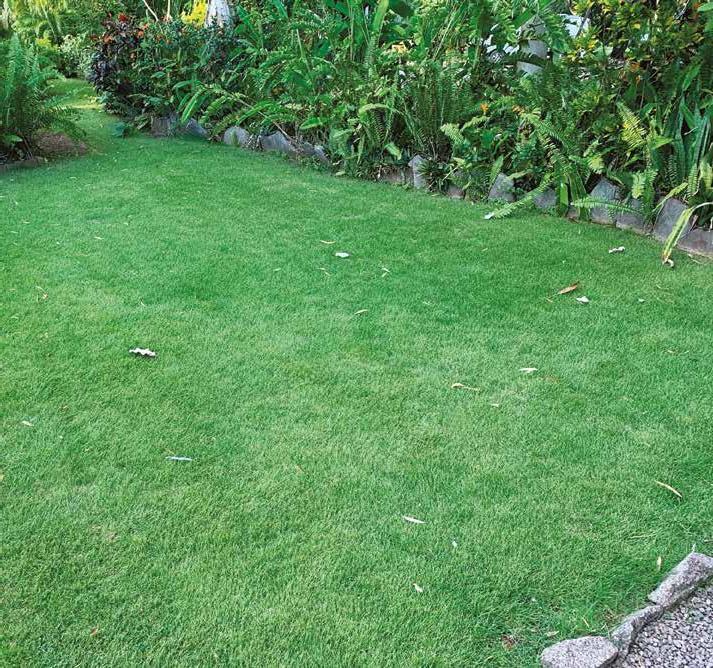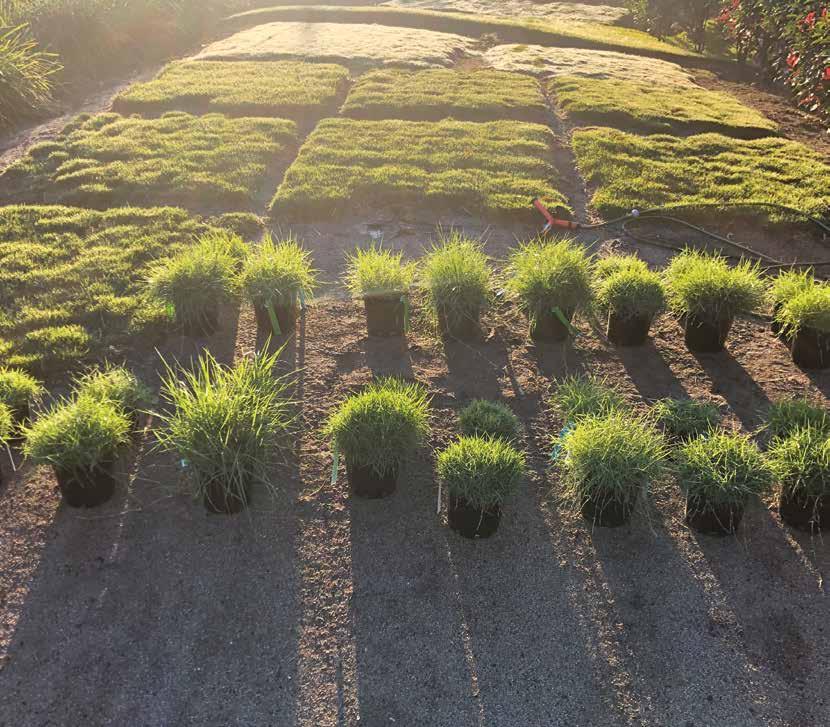
6 minute read
MAINTAINING MANUKA OVAL
Maintaining the Magic at Manuka
Brad Van Dam is the Head Curator at Manuka Oval, Canberra’s unique historic venue for Cricket and AFL and, in the past, it has also hosted Rugby Union, Rugby League and Soccer. The Manuka Oval precinct was designed in the early 1920’s, starting as an open field for AFL and Rugby. The first upgrades to the oval were made in March 1929 which included a perimeter fence, grading the surface, sowing seeds, and installing a cricket pitch. The first cricket match was played on the Oval in April 1930.
Advertisement
Manuka Oval has transformed from a small historic community oval in the 1920’s to now hosting international test cricket matches with the recent 2019-20 cricket season being the biggest yet. Van Dam and his team have played a huge role in making Manuka Oval the quality surface it is today.
With nearly three decades in the turf industry, Van Dam started his career as an apprentice greenkeeper at Sydney University where he spent more than 10 years. After his time at Sydney University, he was given the opportunity to work at Sydney Cricket and Sports Ground Trust under the guidance of former SCG Head Curator Tom Parker, spending more than five years at the Trust while also studying. In 2008, after completing his Diploma in Business Management and starting an Advanced Diploma in Management, he gained his current role at Cricket ACT as Head Curator at Manuka Oval. He continued studying while working at Manuka Oval to complete his Master of Agriculture (Turf Management) from The University of Sydney.
Over the years, the surface at Manuka Oval has had several upgrades starting with the irrigation from quick coupling valves to an automated pop up system and a partial drainage system. In 2006, the turf practice net facility was upgraded, the pitches were re-aligned, and a new net system installed.
When Van Dam took over in 2008, the major upgrades started happening to prepare the surface and the venue for international cricket matches. In 2012, sports lighting was installed and in 2013 the ACT Government, the owners of the oval, commenced a full surface upgrade including some infrastructure around the ground. The playing surface was in good condition but there was an underlying issue with the soil profile being a heavy loam with slow drainage rates. The entire surface of approximately 20,000m 3 was removed by nearly two metres at the southern end and nearly one metre at the northern end due to a .5m slop in the surface. From there, the sub-surface was compacted and graded with a one percent fall from the centre out. A herringbone drainage system was installed along with an automated Rainbird irrigation system. A seven-pitch wicket square was constructed with Oberon soil and washed Legend couch turf installed. The outfield soil profile was a USGA Spec sand upon gravel perched water table design. The top 100mm of sand had five percent Coco peat incorporated as well

as Stalok fibres to increase stability of the surface. The outfield was turfed with washed Grand Prix couch. Van Dam also changed his technique for cricket pitch preparation, which he says is a fantastic thing as the art of pitch preparation in Australia and around the world is different. During the surface up-grade the actual playing surface was reduced to approximately the same size as the Melbourne Cricket Ground to increase the capacity of the venue. New dugouts were installed, and all seats were replaced in the upper seating bowl.
A contingency plan was in place for the surface to be replaced every five to ten years depending on thatch levels, drainage rates, scheduled events and budget. In 2018, the resurfacing was brought forward to prepare for Manuka Oval’s first test match in February 2019 and Van Dam’s first test match as Head Curator. Resurfacing for the test match involved removing 50 to 70mm of the surface to replace like for like sand to existing levels and Santa Ana couch installed. Van Dam also made the decision to change the turf variety for consistency across other major venues in the ACT. Turf sensors were installed after the re-construction to monitor temperature, salinity and moisture levels. In 2018, a new media centre was built at the southern end of Manuka Oval with various other smaller upgrades to prepare for the test match.
Van Dam and his team faced some exciting but difficult challenges after the surface was re-constructed, finding out the limitations and thresholds of the surface and preparing Grand Prix is laid
the cricket pitches in the first season on the new wicket square. A Turf Committee was created for Manuka Oval in 2014 to help Van Dam manage the surface, bounce ideas or trouble shoot issues when they arise. Van Dam says they manage the surface at Manuka Oval in a similar way to the Sydney Cricket Ground (SCG) due to the soil profile at both grounds being USGA spec. sand upon gravel. The grass species on the outfield is different, Manuka is Santa Ana couch (prior it was Grand Prix couch) and the SCG outfield was Legend couch at the time he was working there. After the reconstruction in 2013 Van Dam purchased extra machinery to assist with the thatch management and maintenance of the surface, these included a Toro ProCore and a Phantom corer.
One of the biggest wins Van Dam has experienced during his time at Manuka Oval was increasing the size of the wicket square during the 2013 surface re-construction. The old wicket square was five pitches wide and around 30m long, being 30m long gave cricket the ability for some real changes. It was mentioned if the wicket square was reduced to 25m long and increased it to six pitches wide the actual square meterage of the wicket square didn’t increase. From there, Van Dam and his team looked at the future of international and domestic cricket and how the ACT was going to be placed. Manuka Oval turns into an AFL field during winter, so the wicket square was increased by another pitch to ensure it remains safe and good quality during the AFL season.
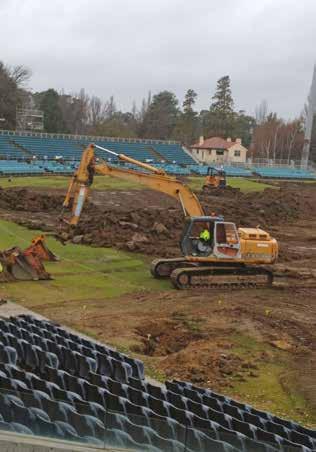
Increasing the old square from five to seven pitches theoretically only increased the size by 75m 2 , increasing the pitch rotation sequence by more than 25%.
A typical week for Van Dam and his team differs in summer and winter. The team looks after two venues including the practice pitches at Manuka and Phillip Ovals as well as Premier Cricket pitches. In the height of summer, the team could be preparing up to eight pitches for play and six practice pitches including the outfields at Manuka and Phillip. They also do the general maintenance of these facilities including things like rubbish removal, gardens etc. Winter is a slower time for the team and is typically when they have a well-deserved holiday. The Premier cricket pitches are put to bed, so the team only monitors them in the off season. AFL is played at Manuka and Phillip during winter, so the team is often mowing, marking and doing the usual maintenance of these facilities. The team does a lot of moisture management on the wicket square at both grounds to ensure they are in optimum condition for play. Winter is also the time to go over all the machines to ensure they are in top shape for the busy summer months.
Van Dam says his team hasn’t been as affected by COVID-19 as other cricket associations and businesses. Cricket ACT has had to mitigate a lot of potential financial issues as an organisation, but Van Dam has been lucky to keep his entire full-time turf team but has unfortunately lost the summertime casuals for next cricket season.

